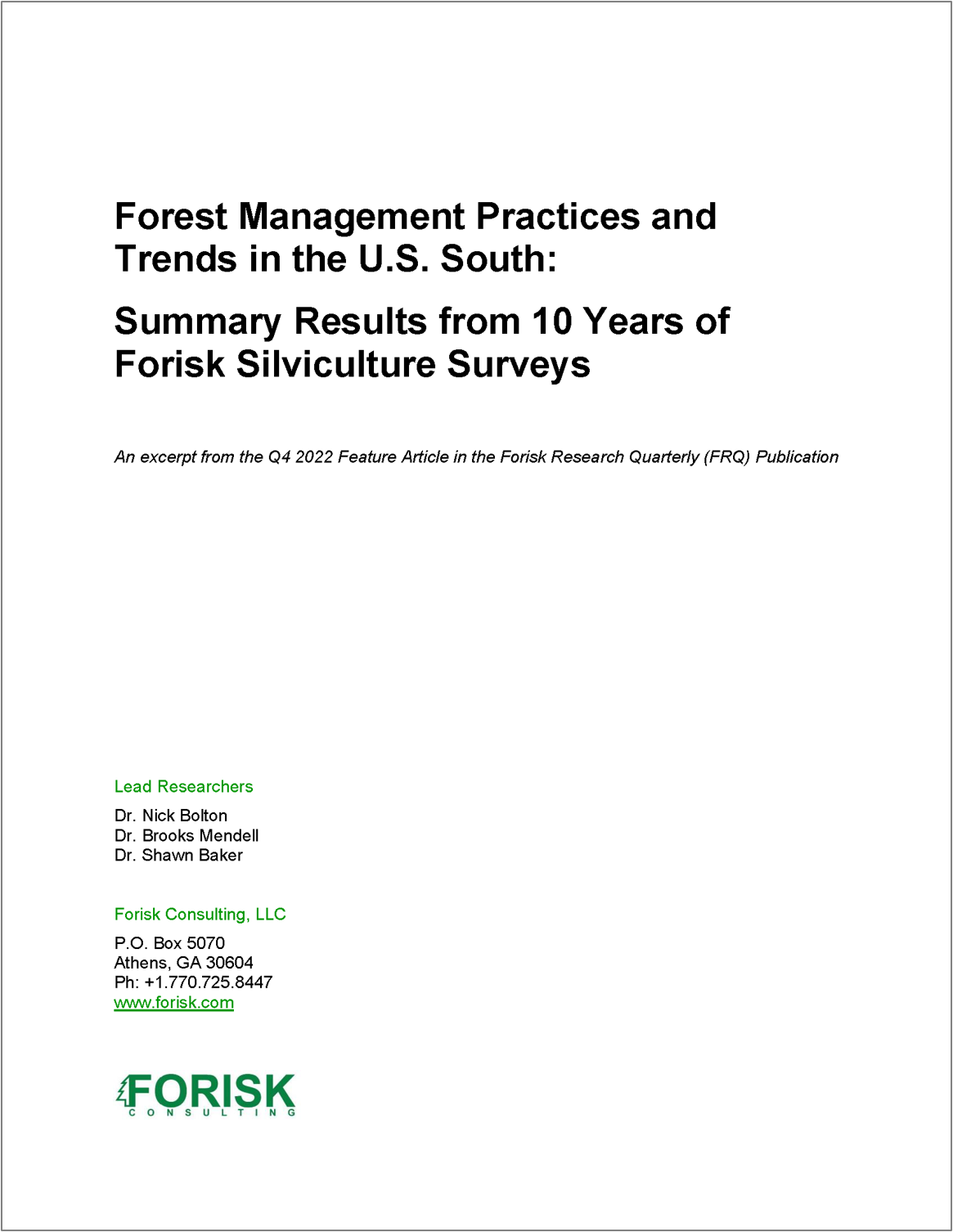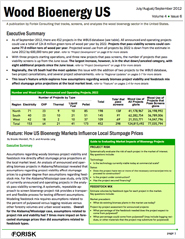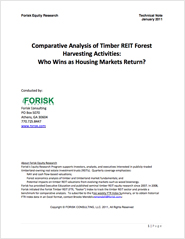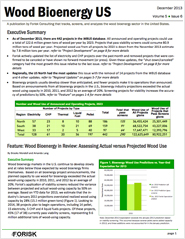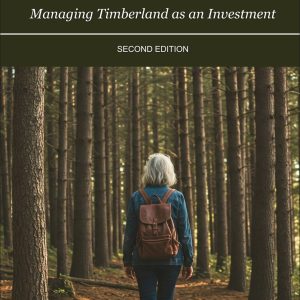Description
This article highlights long-term trends in silvicultural practices across the U.S. South, as well as the costs of managing timberland as indicated by responses from our 2022 survey. The ten-year trends indicate that during this period timberlands remained an attractive investment as real dollars still flow to managed forests. The results also speak to the nuance across physiographic regions in the U.S. South with respect to practices, performance, and costs. As with timber markets, forest management reflects local conditions.
In 2012, Forisk started a research program of biennial surveys of common forest management (silviculture) practices for the largest timberland owners and managers in the U.S. South. The six surveys through 2022 represent one of the largest datasets available on private forest management practices and summarize a decade of silvicultural trends from a tumultuous period in the U.S. economy and forest industry. Starting four years after the Great Recession, results document practices during years of low sawtimber demand and prices, and through a resurgence in southern lumber production. This article summarizes timberland management decisions by survey participants related to planting, competition control, site characteristics, and other key silvicultural practices.
This research tracks the intensity and variance in silvicultural activities across the U.S. South to help forest owners and managers improve forest management decisions and benchmark performance. Most participants own or manage 10,000 timberland acres or more in the U.S. South, though a portion of the acres reported by consultants include non-industrial private forest owners. Survey questions focus on forest management activities completed for the calendar year preceding the year of the survey (e.g., the 2022 survey covers January through December 2021). Starting with the 2016 survey, we also collected data on the costs and revenues from silvicultural activities and began reporting results as weighted averages based on managed acres by treatment. The data in this article is not weighted to allow comparison with data from 2012 and 2014.
Detailed regional cost breakdowns and data on revenues and overhead costs are reserved for survey participants only, and are not available to the public in this report.
Details
- PDF report download; 5 pages
- Price: $500

